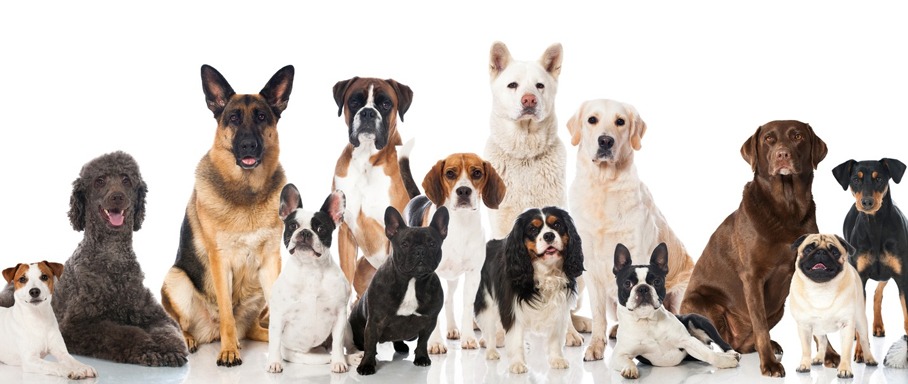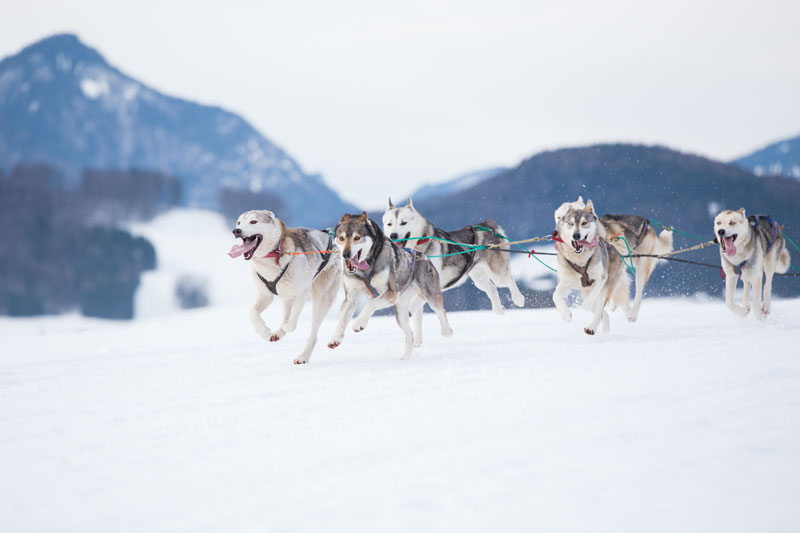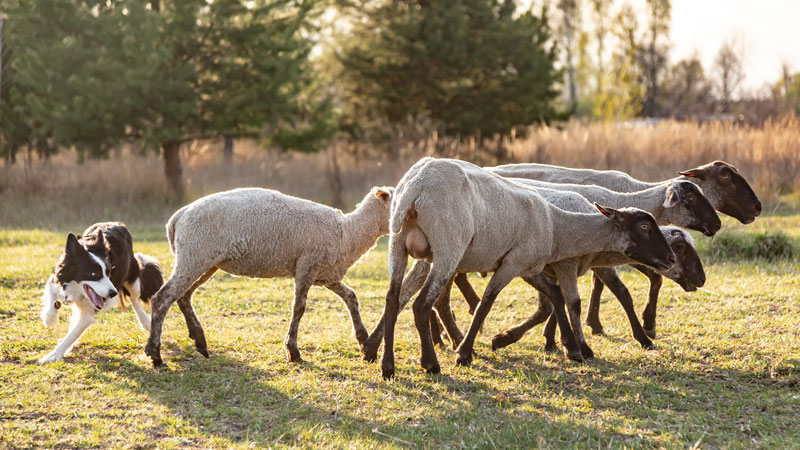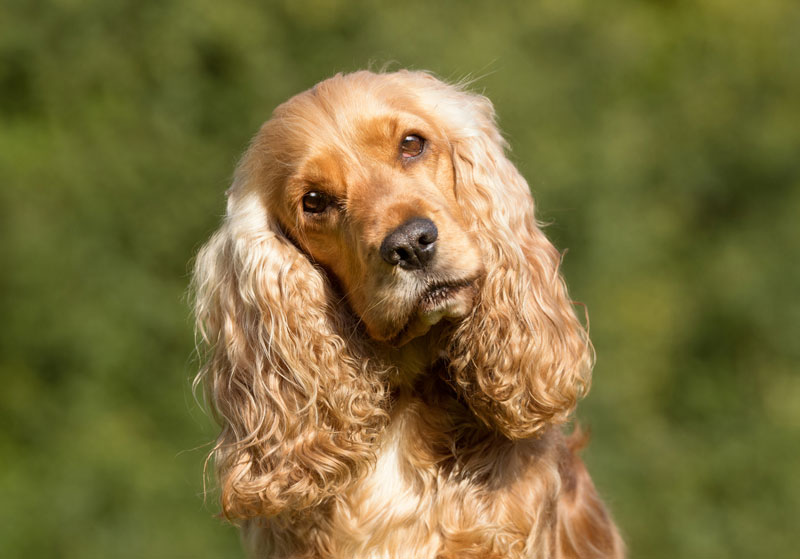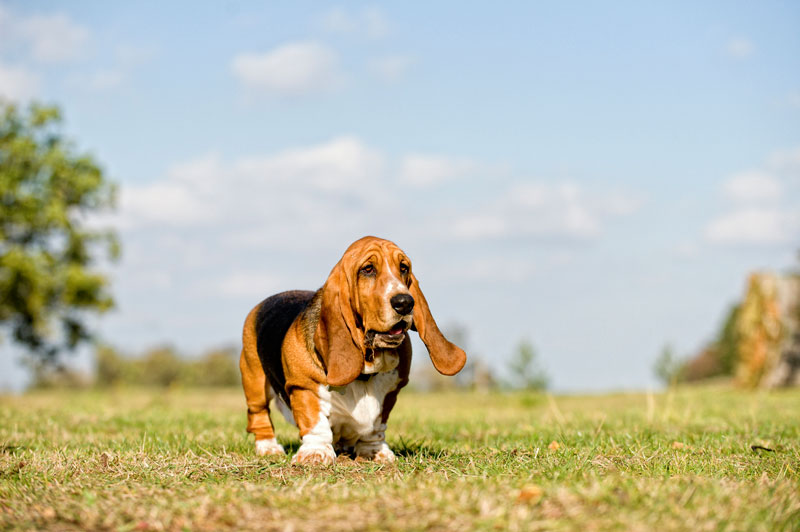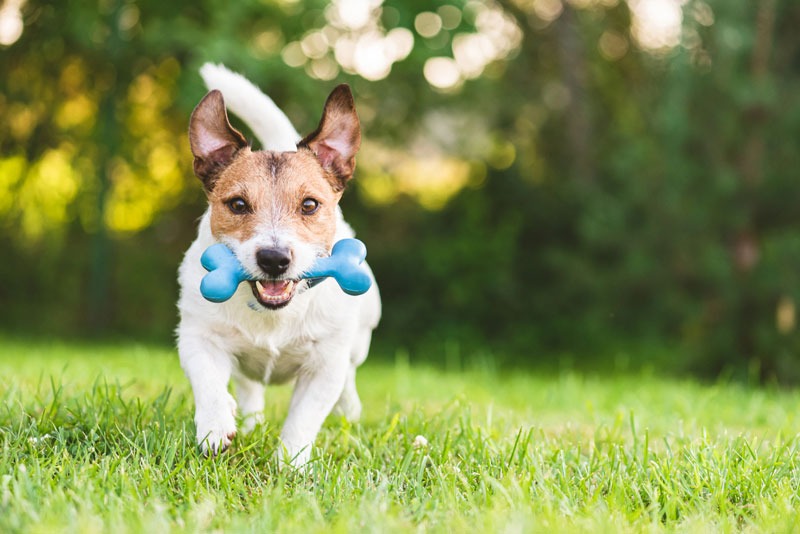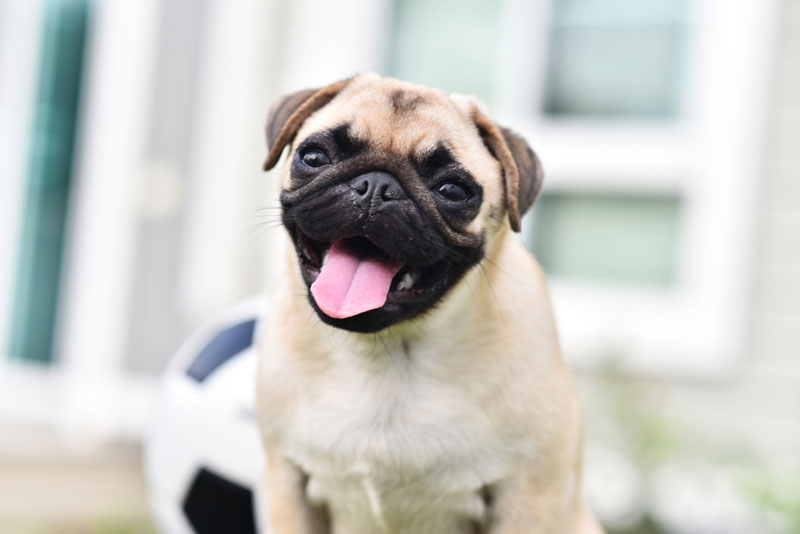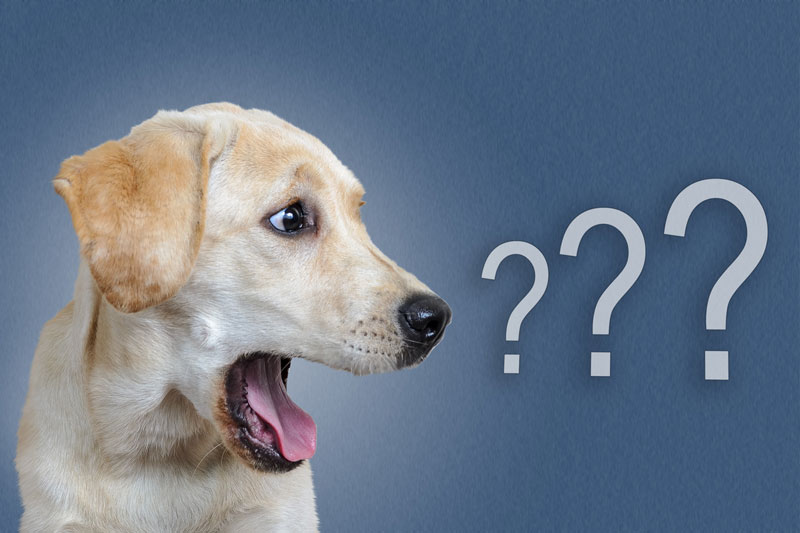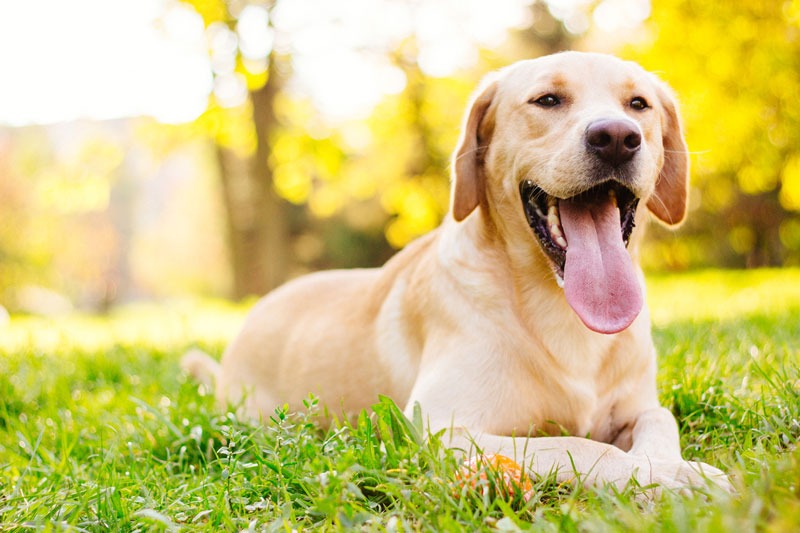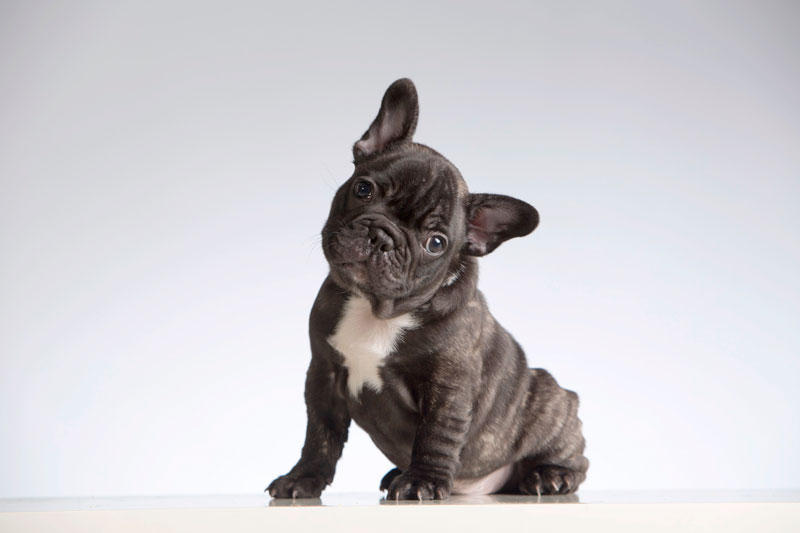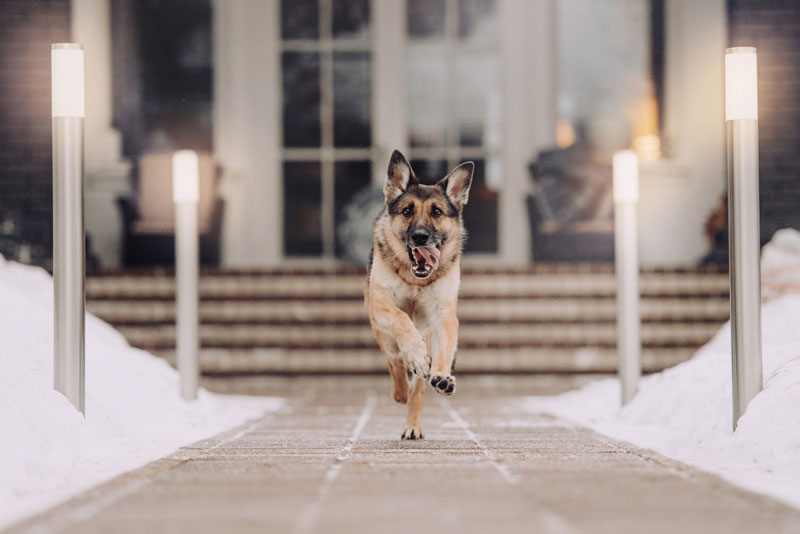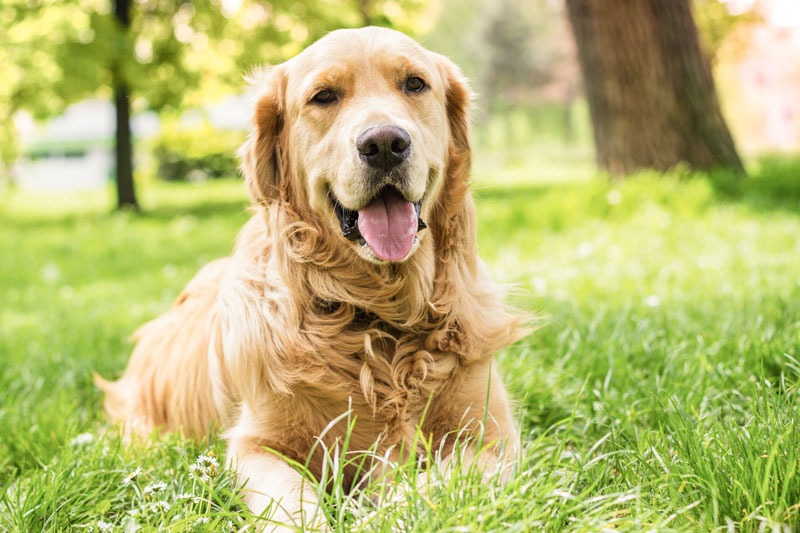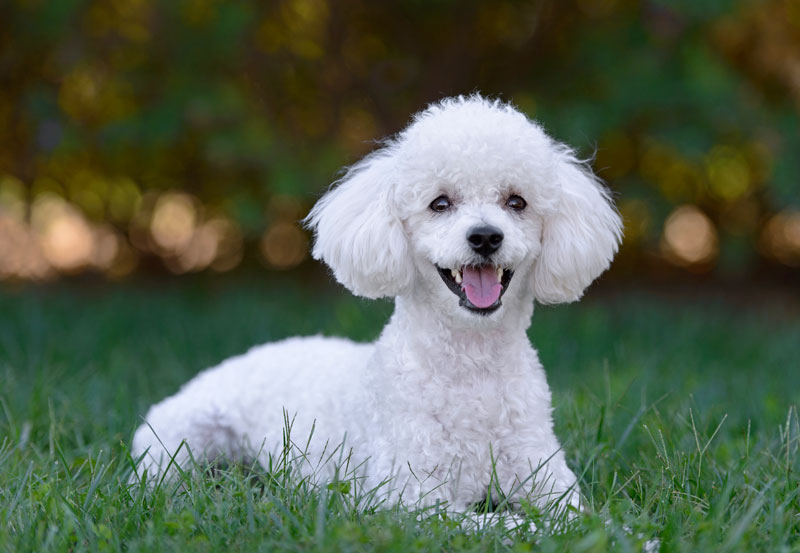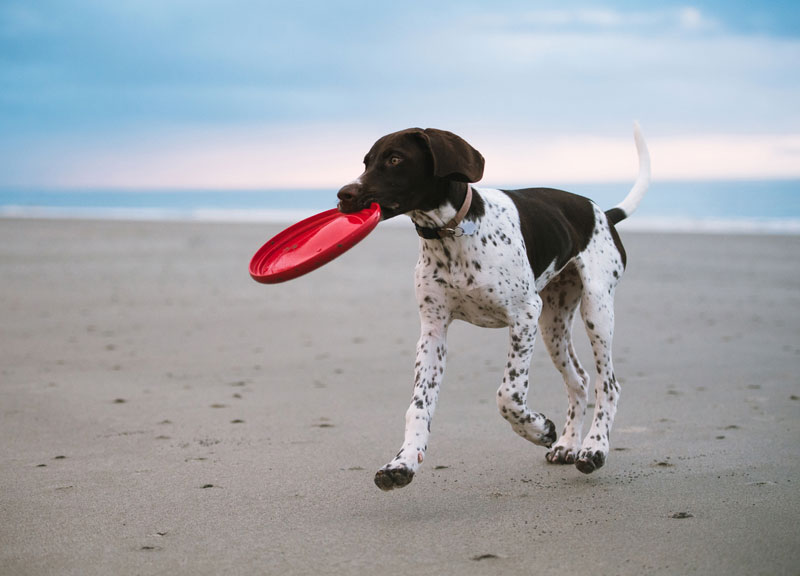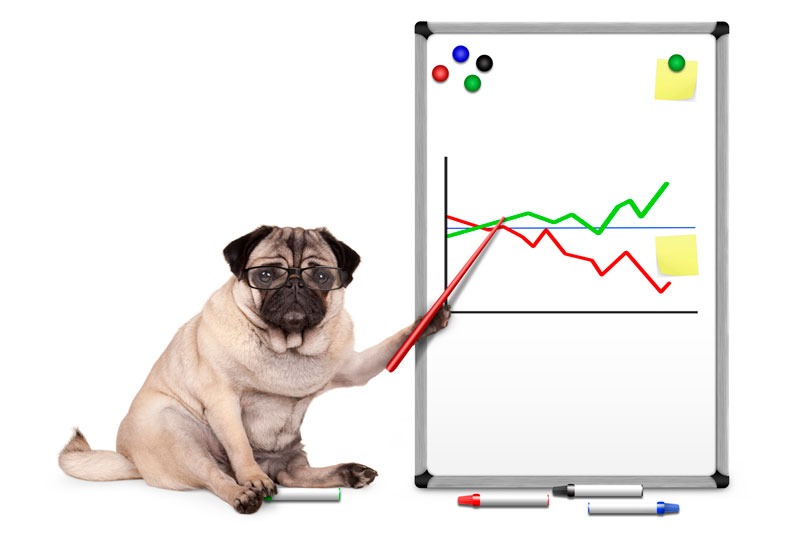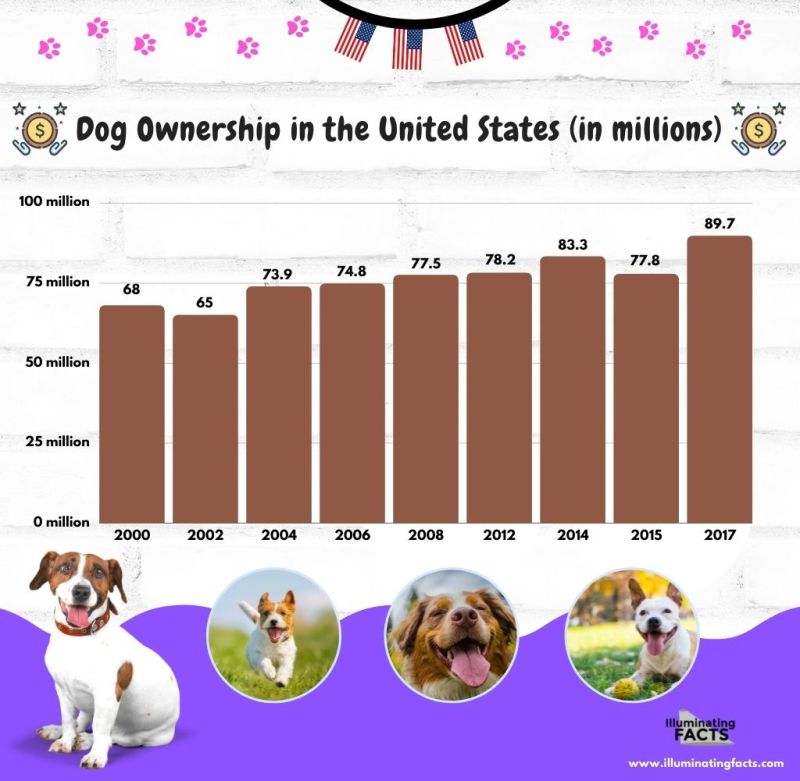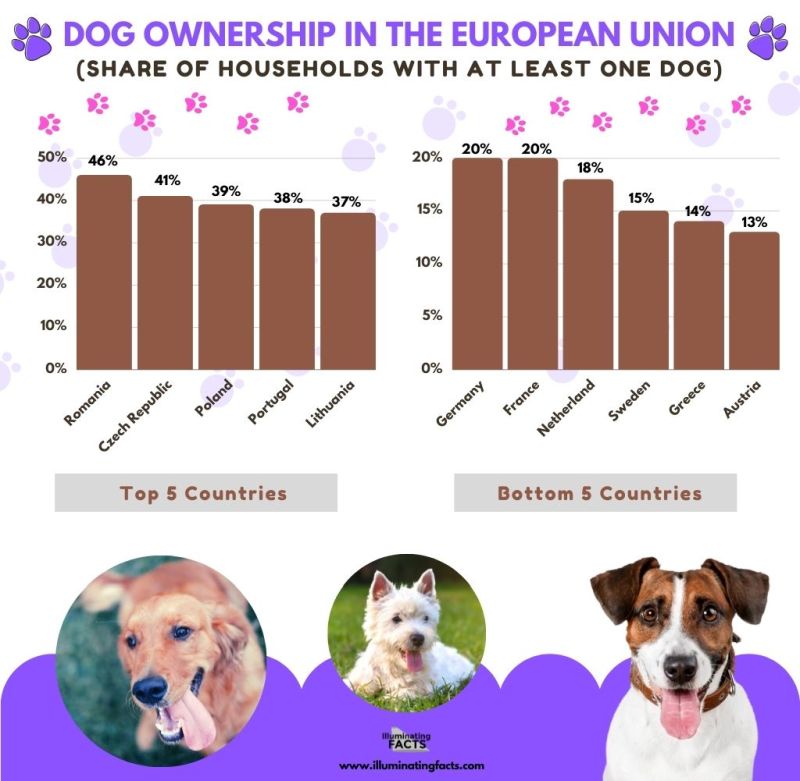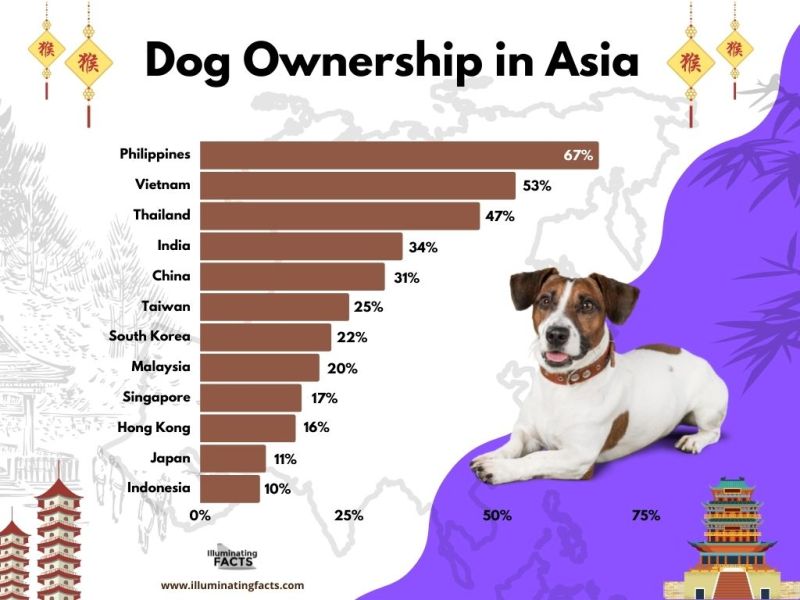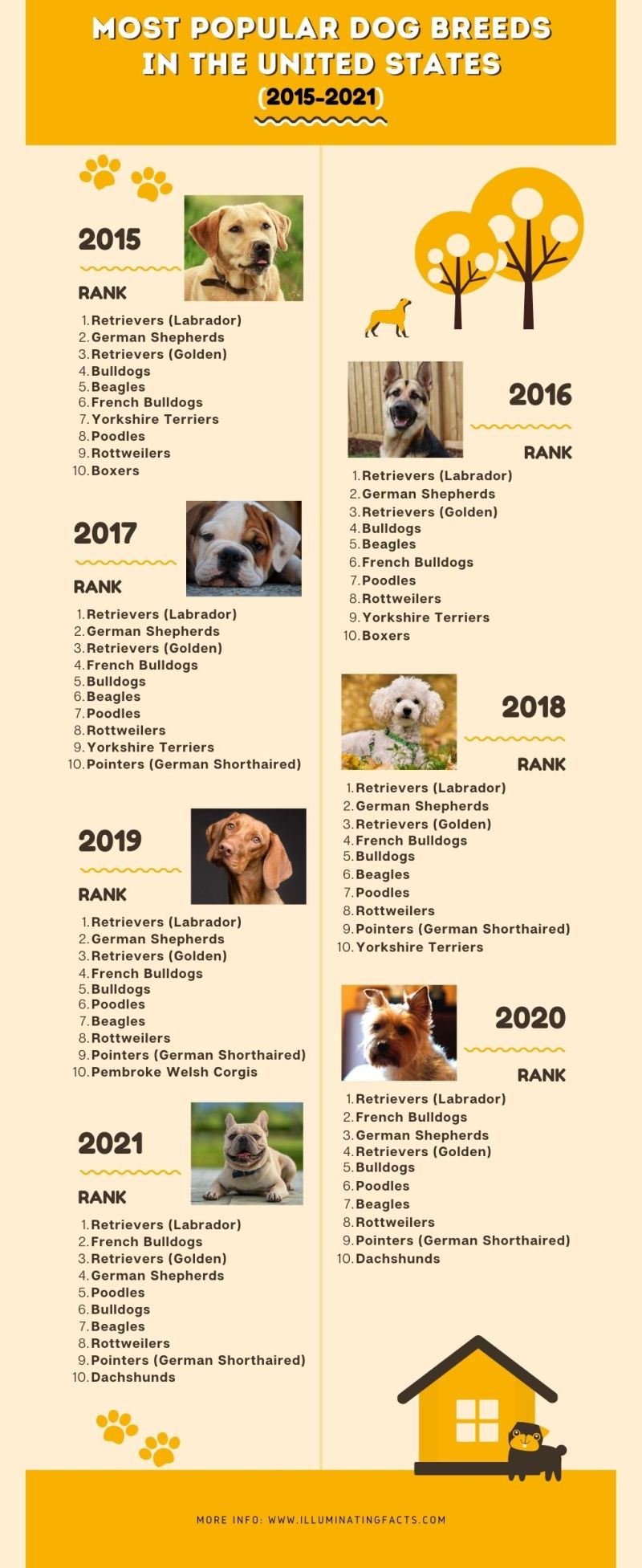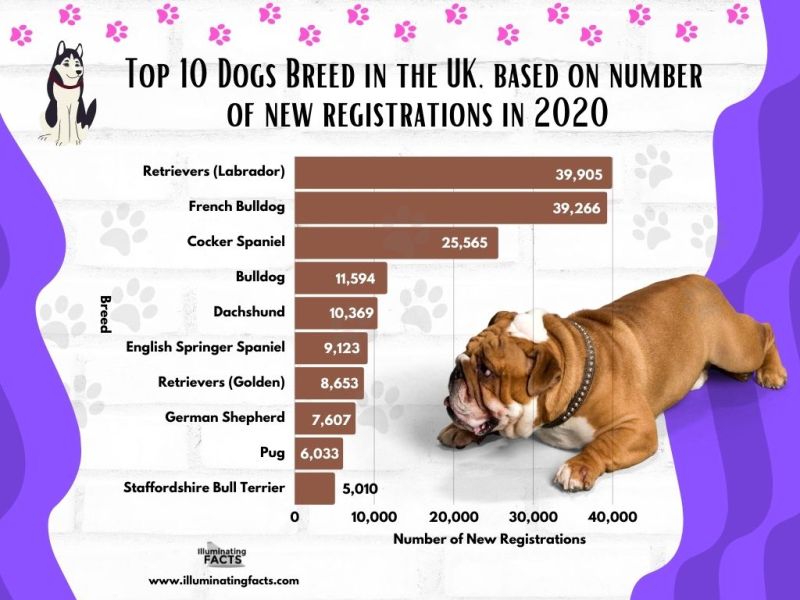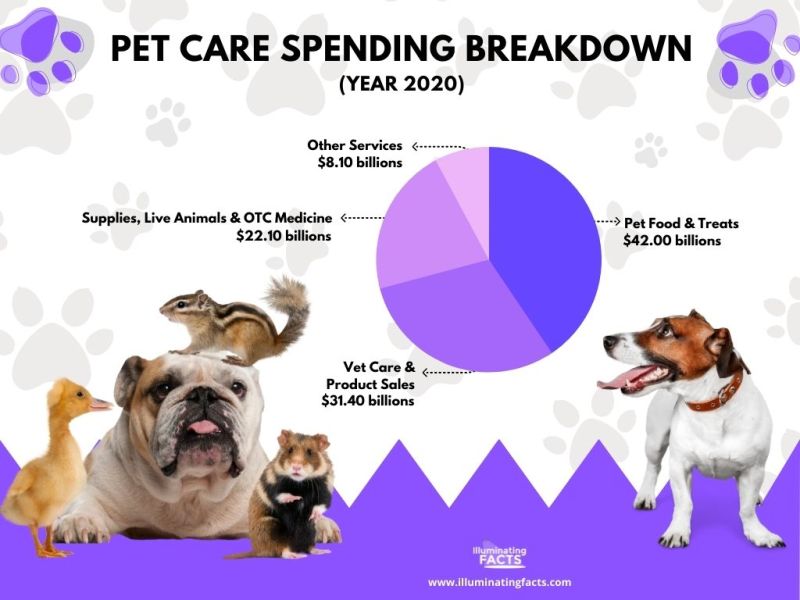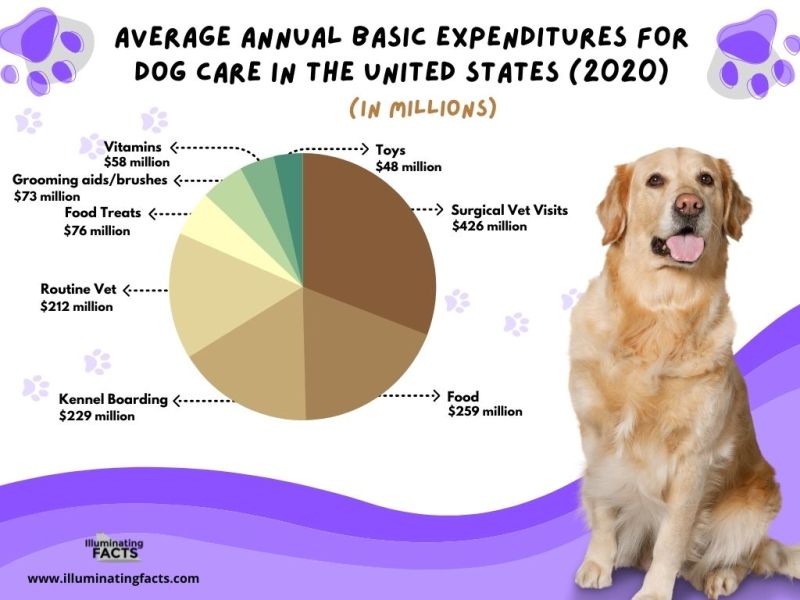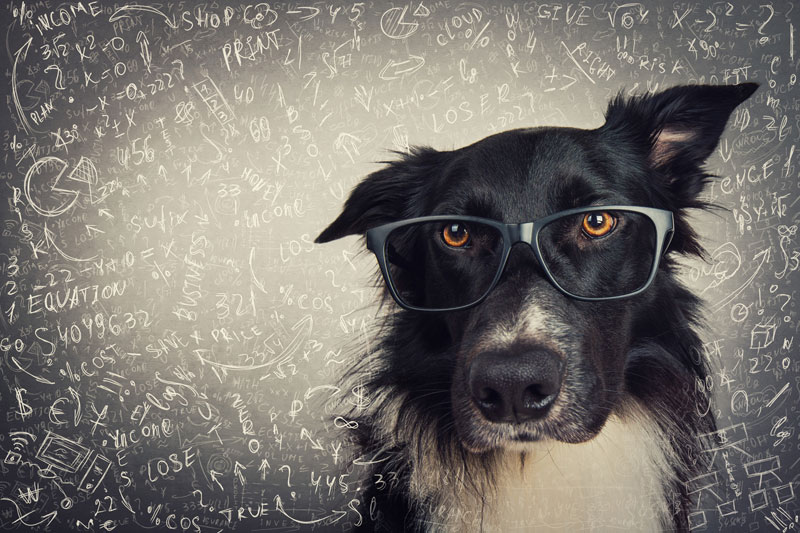Background
Today, dogs are beloved members of our family and a vital part of our human society. They are our faithful companions, living, playing, cuddling, and even sleeping with us every day. With their incredible capacities, dogs also herd cattle, assist military forces with various tasks on the battlefield, help in police work, serve as guides for the blind and disabled, and even aid patients in hospitals and nursing homes towards recovery.
Indeed, human and canine bonding is inimitable, compared to the other members of the animal kingdom. We grew up with dogs, allowing us to understand when they are happy, sad, or in pain, something we couldn’t possibly do with birds, lions, or elephants. While we get chickens and cows for their eggs and milk, we don’t have the same companionship and interaction with them as with dogs.
However, things weren’t like this tens of thousands of years ago. They were once nocturnal, scary wolf-like creatures before transforming and adapting through time before being man’s best friends we have today.
In this post, we’ll cover more about dog evolution, dog breeds, pet ownership, pet care spending, and veterinary care, with numerical data and visualization. Apart from these is a list of fifty interesting facts and a final takeaway of this journey to the amazing world of dogs.
History of Dogs
Archaeologists, geneticists, and researchers for the longest time agreed that domesticated dogs (Canis familiaris) descended from the feral wolves about 15,000 years ago. The unearthing of the Siberian wolf bone suggests that domestication may have occurred much earlier than the consensus, actually beginning from 27,000 years ago to 40,000 years ago. [1]
The subsequent thousands of years of interaction and intervention, with our ancestors taming the domesticated wolves, feeding them, breeding them, and bringing them from one continent to another, the earliest dogs began growing into new species, with the original wolf descendants eventually dying out.
Around 10,000 years ago, dogs then started to take on other tasks apart from tracking prey and protecting their master from predators. Eventually, they came to the earliest urban centers, braced wars, further bred, and traveled the world. Thus, intertwining their world with ours in the process in many ways.
Overall Timeline
This section will highlight the most important events in the history of dog evolution, domestication, and their connection and value to humans.
15,000–40,000 years ago: Dogs descended from wolves
Humans and wolves were actually rivals, with both parties killing and being killed by the other. While the exact time is unknown, humans were able to establish a symbiotic relationship with the wolves. The monumental event occurred with the wolves getting closer to humans as they scavenge their leftovers [2] or the humans capturing wolf puppies and raising them. [3] From being a former foe, these dogs became the world’s first domesticated animal and became early humans’ loyal companions.
There have been debates on the exact location of the initial domestication, with genetics studies pointing to East Asia, Europe, Eurasia, Africa, Mongolia, or Siberia. A study says that multiple-domestication of wolves has actually occurred on both sides of the Old World, the East, and the West. [4] Thus, allowing the split with DNA and when bred together resulted in a wide trove of dogs species.
12,000 years ago: Humans and dogs welcomed the Neolithic Revolution
Around 12,000 years ago, the Neolithic Revolution started. From millions of years of nomadic hunting and foraging, humans switched to a stationary farming lifestyle with the dawn of the Holocene. [5] The radical shift from being hunter-gatherers to being farmers altered the human genes and way of living, serving as the harbinger of modern civilization.
Dogs settled with humans also experienced dramatic changes in their genetic makeup and roles. Two thousand years later, humans bred them to give them favorable features suitable for agricultural functions, such as protecting, herding, locating livestock, and killing pests.
9,500 years ago: Dogs were bred for sledding
The discovery of the 9500-year-old dog on Zhokhov, one of Siberia’s remotest islands, suggests that humans had been breeding them for sledding around the same time. Genetic comparisons showed that the genomes of modern sled dogs, such as the Alaskan Malamute, Siberian Husky, and the Greenland sled dogs, were largely similar to the ones found on Zhokhov. This information shattered the earlier notion that sled dogs only lived and worked with humans 2,000 to 3,000 years ago. [6]
6,000 years ago: Dogs joined humans in the cities
With the spiraling agriculture and trade, food security and economic stability became possible, allowing the ascent of many civilizations. The earliest ones sprouted between 4000 and 3000 B.C.E., starting with Mesopotamia (present-day Iraq) and eventually Egypt. Other settlements began in various parts of the world, like in the Indus Valley, China, and Central America. [7] Wherever humans settled, dogs were ultimately there.
600 B.C.: Dogs were brought to the war
Horses played a pivotal role in ancient warfare history, but canine contributions to the battlefield were also significant. The earliest mention of dogs being used as military animals traces back to 600 B.C. when Alyalettes, King of the ancient empire Lydia (now part of Turkey), ordered to bring dogs against a battle with the Cimmerians. [8] The attack dogs were proven to be effective, tearing, killing, and causing many invaders to flee.
A.D. 43: The canine military market emerged
Prior to their invasion of Britain in A.D. 43, the Romans had already been utilizing dogs in their military force. While they had won their combat with Britain, the Brittania tribes had more ferocious and battle-ready dogs, which dazed the war victors.
With that, Romans began importing and incorporating the British warrior dogs into their arsenal. The canine military emerged, with the breeder and traders intercrossing and selling the breeds. Dogs continued to fight on the battlefield. However, they also transcended into public amusement when they were also used for dreadful gladiator shows and were forced to clash with other wild animals and even humans. These fearsome dogs reached other parts of Europe, such as Spain, France, and back to Britain. [9]
12th century: Baiting became popular in England
During the 12th century, the practice of baiting catapulted into popularity in England. Packs of dogs were released into rings with chained animals of more significant size like bears and bulls. The hungered and provoked canines agonized and devoured the defenseless animals. While disturbing and gruesome, the said blood sport entertainment was deemed acceptable among the English elites. [9]
1493: Christopher Columbus introduced European dogs to New World
In 1943, Christopher Columbus brought 17 ships and 1,500 colonizers to the New World on his second voyage. Along with them were animals the region had never seen before, such as pigs, sheep, horses, and cows. [10] Of course, dogs were part of the crew. The Italian explorer had 20 mastiffs and greyhounds on the journey but mainly used them against the natives as horrific attack dogs. [11]
The 1750s to 1819: Dogs first trained and served as assistance dogs
In the 1750s, Quinze-Vingt, a Parisian hospital, pioneered the first systematic training attempts to use dogs to assist and guide blind people. Nearly four decades later, blind Austrian Josef Reisinger trained a spitz and, later, a poodle (after the death of the former) as his guides. The dogs were so effective that some people even became doubtful of his disability.
Jumping to 1819, Johann Wilhelm Klein established the Institute for the Blind and released the first training manual for guide dogs, a handbook still utilized today. Dogs then again found a new purpose after World War I, as they were used in Germany to help soldiers recover from the traumas of the global conflict. [12]
1835: Baiting was outlawed, dogfighting emerged
In 1835, a parliament act in England formally outlawed the brutal spectacle of baiting. As early as the 1700s, the practice was already dwindling in popularity. What grew was the public sentiment that now viewed baiting as animal cruelty and as a detestable form of entertainment. [13]
While the bears and bulls benefitted, dogs never shared the same fate, as they were instead forced to fight each other. Breeding shifted towards producing the fierce, agile, and durable dogs fit for dog-on-dog combat.
Soon, these dogs were brought to the pre-Civil War United States, where dogfighting became rapidly popular. Breeding also occurred, giving birth to the American pit bull terrier. Dogfighting also eventually reached Latin America, Europe, and Asia, though the sport was also immediately and widely outlawed by the 1860s. [9]
Mid-19th Century: The Victorian Explosion and the Birth of Pet Ownership
The Victorian Era brought massive economic growth, rapid industrialization, dramatic breakthroughs in the arts, and significant technological advancements that shaped the modern world. Yet, another gift of that monumental era was the modern breeds we have today.
With the population rising in the cities due to the Industrial Revolution, farm animals like sheep, pigs, and cattle were removed from the urban centers for hygienic purposes. With their expulsion, people began keeping dogs inside their private homes as pets. Prior to that, dogs were a “public property,” but the period saw them transforming into private or personal fixtures. Thus, inventing the concept of pet ownership.
Like how people molded the world, they also designed dogs, selectively breeding them to attain specific traits. The establishment of a classification system, and the rise of competition shows, stirred up the dog fancy, which tweaked, added, and standardized modern breeds around the world. [14]
1877: First dog show was held in the United States
In 1877, the US first held its formal dog show in New York City. Spearheaded by the Westminster Kennel Club, the event enticed 1,201 dog entries. It was a massive hit and became an annual event held no matter what, being staged even amidst the two World Wars and the Great Depression. [15]
1884: The American Kennel Club was established
On September 17, 1884, the American Kennel Club, the largest and preeminent registry of purebred dogs in the world, was formed. Twelve dedicated sportsmen attended its first official meeting and created the club’s “The Constitution and Bylaws and Dog Show Rules.” The Fox Terrier was its first recognized breed. [16] Prior to its foundation, the nine charter breeds, mostly hunting dogs, were already recognized in America by 1878.
1888: Dogs assisting with modern police work
The first mention of dogs being utilized for police work goes back to the 14th century when they were tasked to guard docks in St. Malo, France. Yet, it was only five centuries later when canines entered modern police work. In 1888, the London Metropolitan Police Force utilized bloodhounds for investigating and tracking Jack the Ripper. [17] Though unsuccessful in London, Ghent, Belgium began integrating and training dogs for police work and was soon adopted elsewhere. [18]
1937-1938: Dogs are formally trained for search and rescue
As early as the 17th century, European monks already used dogs, specifically St. Bernards, as guard dogs. With their strong sense of smell and tracking abilities, these dogs were eventually used to find individuals buried in avalanches during rescue missions. During World War I, the Red Cross used these canines to track and locate injured soldiers during the respites of the conflict.
Yet, both events didn’t pave the way for the modern search and rescue dogs we have today. It was from 1937-to 1938. During a Swiss rescue mission in an avalanche incident, a dog remained barking on a particular spot already probed by the rescue team. They re-inspected the area, and the victim was found alive. Experts then began training Alsatians for search and rescue, and dog training centers spread widely throughout the region. [19]
The 1960s: Dogs used for animal-assisted therapy (AAT)
Formal research and experiments about AAT began in the 1960s. Dr. Boris Levinson brought his pet dog, Jingles, to his child therapy session. It resulted in positive effects, with the children appearing to be more at ease and more open to conversations when the dog was around. Since then, dogs have become an integral part of therapy work. [20]
2021: AKC welcomes its 197th breed
Almost year by year, AKC adds a new breed to its registry. As of 2021, AKC recognizes 197 dog breeds, with the Biewer Terrier being the latest addition. [21]
2022: AKC welcomes its 198th and 199th breed
As of 2022, AKC recognizes 199 breeds, with the Mudi and the Russian Toy as the latest additions.
A Summary
The overall timeline of the History of Dogs is illustrated in the image below.
Dog Breeds Recognized by AKC by Year
Timeline of AKC Breed Recognition | |||
1878 | 1885 | 1886 | 1887 |
|
|
|
|
1888 | 1891 | 1893 | 1894 |
|
|
|
|
1897 | 1898 | 1903 | 1904 |
|
|
|
|
1906 | 1908 | 1909 | 1910 |
|
|
|
|
1911 | 1912 | 1913 | 1914 |
|
|
|
|
1915 | 1917 | 1922 | 1924 |
|
|
|
|
1925 | 1926 | 1928 | 1929 |
|
|
|
|
1930 | 1931 | 1933 | 1934 |
|
|
|
|
1935 | 1936 | 1937 | 1940 |
|
|
|
|
1943 | 1944 | 1945 | 1946 |
|
|
|
|
1955 | 1959 | 1960 | 1969 |
|
|
|
|
1972 | 1973 | 1974 | 1976 |
|
|
|
|
1978 | 1979 | 1980 | 1983 |
|
|
|
|
1990 | 1991 | 1992 | 1994 |
|
|
|
|
1995 | 1996 | 1997 | 2000 |
|
|
|
|
2001 | 2003 | 2004 | 2006 |
|
|
|
|
2007 | 2008 | 2009 | 2010 |
|
|
|
|
2011 | 2012 | 2013 | 2014 |
|
|
|
|
2015 | 2016 | 2018 | 2019 |
|
|
|
|
2020 | 2021 | 2022 | - |
|
|
- | - |
What Are the 7 Dog Breed Groups?
The American Kennel Club divided dog breeds into seven major dog groups, taking into account the particular set of work the breed was developed to do and its characteristics. The seven major dog groups include the following: Working, Herding, Sporting, Hound, Terrier, Toy, and Non-Sporting Group. [22]
Working Group
Breeds that fall in the Working Group were specifically bred to aid humans and perform practical tasks, such as guarding homes, protecting their families, and pulling carts and sleds. Considered the blue-collar workers of the dog world, these dog breeds are renowned for their strength, smartness, and build. Some of the breeds that are part of the Working Group include Siberian Huskies, Saint Bernards, Bullmastiffs, Boxers, Great Danes, and Rottweilers.
Herding Group
The Herding Group covers breeds initially developed for herding livestock like cows, sheep, and reindeers. These breeds are naturally energetic, intelligent, and responsive, making them suitable for training and allowing them to have an incredible capacity to move other animals. Some breeds that belong to the Herding Group include the Border Collies, Pembroke Welsh Corgis, Briards, Australian Cattle Dogs, Icelandic Sheepdogs, and Pulis. Today, other breeds in the Herding Group are trained for police work, such as the Belgian Malinois and German Shepherds.
Sporting Group
Breeds under the Sporting Group were originally developed for assisting hunters in capturing and retrieving game. These dogs boast high energy and are built to endure harsh conditions. Examples of breeds that belong to the Sporting Group include Cocker Spaniels, Labrador Retrievers, Clumber Spaniels, German Wirehaired Pointers, English Setters, and Weimaraners.
Hound Group
Breeds in the Hound Group were originally bred for hunting prey. These breeds have a powerful sense of smell and strong prey drives, with often nothing that can deter them from pursuing quarries from rabbits to raccoons, wild boars, foxes, coyotes, and antelopes. Some members of the Hound Group are the Basset Hounds, Dachshunds, Greyhounds, Bloodhounds, Beagles, Whippets, and Grand Basset Griffon Vendeens.
Terrier Group
The Terrier Group consists of breeds initially bred to pursue and kill rodents and other vermin. While they still remain adept in that particular task, they are more loved as pets and watchdogs today. Some breeds that belong to the Terrier Group are the Jack Russell Terriers, Fox Terriers, Bull Terriers, Scottish Terriers, Welsh Terriers, and the Australian Terriers.
Toy Group
The Toy Group has the diminutive, affectionate, and sociable breeds of the dog world. They come in nearly all colors and coat types to satisfy their loving humans. Though they are short in stature, they are intelligent, attentive, energetic, and are never short of personality. Some members of the Toy Group are the Pugs, Shih Tzus, Chihuahuas, Pomerians, Maltese, Havanese, Pekingese, and Miniature Pinschers.
Non-Sporting Group
Breeds under the Non-Sporting Group are diverse, as it covers those whose purpose or characteristics do not fit any of the previous classifications. These dogs come from various backgrounds, have distinct personalities, and appear in different sizes, coats, and overall appearances. While they are hard to generalize, what’s certain is that these breeds can be great and loving pets. Breeds under the Non-Sporting umbrella include Chow Chows, Dalmatians, American Bulldogs, Poodles, and Tibetan Spaniels.
Origins of the Famous Dog Breeds
Dog breeds had rapidly grown with human intervention rather than natural selections. Humans from across the world developed and bred dogs through time to help them do certain tasks, achieve a certain appearance, or fine-tune behavior. [23] Let’s look at the origins of the top 10 famous dog breeds from AKC for 2020 [24] and see the fascinating stories behind them.
1. Labrador Retrievers
The well-loved Labrador Retrievers trace their origins to Newfoundland, Canada, where they were mainly used for retrieving ducks and as fishermen’s companions. The Lab rose to massive popularity after the English nobility noticed them when visiting Canada in the 1800s. A century later, the British did the work for the refinement and standardization of the breed. The Labradors were officially recognized by the AKC in 1917. It was first hailed as the most famous breed in 1991 and has not left the pedestal ever since. [25]
2. French Bulldogs
During the mid-1800s, England’s Bulldogs captured the hearts of many people in English cities, including the lacemakers from Nottingham. With the advent of the Industrial Revolution, the “cottage industries” placed lace-making into peril, forcing these workers to move to northern France and bringing the Bulldogs along with them. At some point, the Bulldogs were bred to local terriers or Pugs, giving its renowned bat ears and signaling the birth of the French Bulldogs. [26]
3. German Shepherds
As their name suggests, they hail from Germany, whose farmers in the late 19th century strived to develop the perfect German herder. After crossing different German herding dogs, they attained the large, muscular, agile, and highly intelligent German Shepherd dog. Yet, the breed’s versatility allowed it to do a plethora of other tasks. This ability to do many things made them one of the world’s best all-purpose workers. [27]
4. Golden Retrievers
The creation of the Golden Retriever is attributed to Dudley Marjoribanks. In the mid-1800s, he began crossing different breeds to develop the perfect gundog for his Guisachan estate in the Scottish Highlands, resulting in the remarkable lineage of working retrievers. With some tweaks after his era, the exuberant, gorgeous, and devoted Golden Retriever emerged. [28]
5. Bulldogs
Bulldogs were one of the breeds that came forth from the gruesome practice of baiting in England. After the bloodsport was banned, the Bulldogs were on the brink of extinction as they were replaced by brisker and more vigorous breeds in the sport of pit-dog fighting, the new form of entertainment that has risen. Fortunately, admirers of the breed saved the Bulldogs by transforming them from fighters to adorable companions. [29]
6. Poodles
Though Poodles are France’s national dog, the breed actually traces its roots to Germany, where they developed around 400 years ago as water retrieving dogs. With their incredible swimming skills and water-resistant coat, they became excellent companions to hunters. Later on, the breed was standardized in France. Banking on their many desirable traits, these elegant dogs transitioned smoothly from being lake dogs to being proud aristocrats in Europe. Eventually, the Standard was reduced to the Miniature and the Toy varieties, producing the famous companion dogs. [30]
7. Beagles
Various theories surround the origins of the Beagle. There were said to be smaller, more compact Beagle-type hounds employed in England employed for hunting hare even before the Roman conquest of Britain. The blending of the British hounds and the European hounds in the next ten centuries was said to have resulted in the creation of the modern Beagle. [31] The breed came to the United States post-Civil War and these dogs became quickly popular among rabbit hunters. Today, Beagles are America’s favorite hound dog. [32]
8. Rottweilers
Rottweilers descend from the mastiff-style canines used by the ancient Roman legions to corral and protect herds as they pursue the world. After the empire’s demise, these working dogs were employed in Rottweil, a cattle town in Germany. They continued to move herds, this time from farms to markets while guarding the livestock against rustlers. In the 1800s, railways became popular, taking away the job from them. Rottweilers switched to other roles, such as being personal protectors, police dogs, or guide dogs. Despite many changes since its standard was created in 1901, only minimal changes have dawned on the breed. [33]
9. German Shorthaired Pointers
Since the 1700s, German hunters were crossing various hound–pointing dogs to produce a versatile pointer with a powerful sense of smell. It was only around the 1800s that they had subsequently achieved their goal. German Shorthaired Pointers became valuable on the hunting fields, where they hunted various quarries like fowls, opossums, raccoons, and rabbits with high success. [34] The GSP first reached the United States in the 1920s after being imported by sportsmen, but the ones imported by Dr. Charles Thornton to Montana in 1925 served as the ancestor of the breed in the country. [35]
10. Dachshunds
With their name translating to “badger dog” in the German language, Dachshunds were originally created to dig and enter tunnels and force the animal out of their dens. They were registered in the AKC stud book in 1885, and their popularity in the United States became quick and omnipresent since then. [36]
Dogs By The Numbers
This section will discuss all the numbers associated with dogs, including dog ownership, dog breed popularity, pet care spending, and veterinarian statistics. All these are presented with good visualization of data for a better grasp and understanding of the amazing world of dogs.
Pet Ownership Among Households in the United States
Based on the American Pet Products Association (APPA) for 2021-2022, 70 percent of the U.S. households own a pet (equalling 90.5 million homes), a 3% increase from its previous report at 67%. In 1988, the initial year it was started, only 56% of the households in the country owned a pet. While there are slight dips, overall pet ownership in the country rose 34% over three decades. [37][38]
Dog Ownership in the United States (in millions)
At the turn of the millennium, the total number of dogs owned in the United States was 68 million as per the APPA’s survey. Though there have been some dips in growth, such as in 2002 and 2015, with a 3-million and 5.5-million decrease respectively. Yet, those years also heralded the biggest increases in the subsequent reports, with 8.9 million more dogs owned in 2004 and another 11.9 million in 2017. In general, dog ownership has steadily risen, bringing it to 89.7 million as of 2018. [39] With that, dogs also take a stronghold as the United States’ most popular pets, with 53% of American households owning at least one dog as of 2020. [37]
Dog Ownership Among Households in the European Union
Based on a study in the European Union in 2019, 46% of households in Romania own at least one dog. Other countries belonging to the top five include the Czech Republic (41%), Poland (39%), Portugal (38%), and Lithuania (37%). Countries with the lowest share of dog-owning households or, the bottom five, include Germany and France (20%), the Netherlands (18%), Sweden (15%), Greece (14%), and Austra (13%). [40]
Dog Ownership Among Households in Asia
Meanwhile, in Asia, a study by Rakuten shows that overall pet ownership is at 59%. Despite such, there are glaring gaps, especially in terms of dog ownership. Ownership of dogs in Indonesia is only at 10%, Japan at 11%, Hong Kong at 16%, and Singapore at 17%. Meanwhile, Malaysia is at 20%, South Korea at 22%, and Taiwan at 25%.
Nearly a third of households own a dog in China at 31%, while India has a little over a third at 34% percent. Countries on the other end of the spectrum are Thailand at 47%, Vietnam with 53%, and the Philippines with the highest percentage of dog owners at 67%. [41]
Dog Ownership in the U.S. States
Based on American Veterinary Medical Association’s study in 2016, the states with the highest percentage of dog owners were Idaho at 58%, followed by Montana and Arkansas at 52%. States with the lowest rate of dog ownership include Rhode Island at 26%, and New Hampshire and Connecticut at 24%. [42]
Most Popular Dog Breeds in the United States
Despite many changes in the previous decades, only one thing has remained: Americans’ love for the Labrador Retriever. Since reaching the top spot in 1991, the breed has never been toppled in the American Kennel Club’s list derived from its registration statistics. Meanwhile, other breeds have interchanged spots and welcomed new additions on the top end of the list of America’s favorites. Here’s a look at the top ten most popular dogs by the AKC in recent years. [43]
Most Popular Dog Breeds in the UK
Labrador Retrievers also rank as the most popular breed in the UK based on the number of newly registered dogs in 2020. Golden Retrievers, French Bulldogs, Bulldog, German Shepherds, and Dachshunds are also part of their top ten, with the addition of Cocker Spaniels, English Springer Spaniels, Pugs, and the Staffordshire Bull Terriers. [44]
Overall Pet Care Spending in the United States
With the love and attention devoted to pets, it entails massive costs for their overall care and welfare. Based on the data released by APPA in 2020, the United States spent $103.6 billion on pets. It was a historic high, as it was the first time pet industry sales breached the 100-billion mark. In 2010, overall actual pet care spending was only $48.35 billion. It has then steadily raised to $55.72 billion in 2013, $66.75 billion in 2016, and $95.7 billion in 2019, a significant jump from the previous year’s $72.56 billion. [45][46][47][48]
Pet Care Spending Breakdown in the United States
As per APPA as of 2020, expenses for pet food and treats were the biggest at $42.0 billion. Veterinary care and products sales ranked second at $31.4 billion, followed by the cost of supplies, live animals, and over-the-counter medicines at $22.1 billion. The smallest portion was allotted to other services, such as grooming, insurance, training, and other services (not under vet care) at $8.1 billion. [49]
Average Annual Basic Expenditures for Dog Care in the United States
The average basic annual expenditure for dog care in the United States is $1,381 as of the APPA’s survey in 2020. Surgical veterinary visits were the biggest expense at $426, followed by pet food at $259, and kennel boarding at $229. Vitamins and toys were the lowest expenditures at $58 and $48 respectively. [45]
Top 50 Interesting Facts About Dogs
- Just like a human’s fingerprint, no two dogs’ nose prints are identical.
- Sweat glands can be found between a dog’s paws.
- Puppies are born deaf and won’t hear anything until they reach their third week. It will be their last sense to develop but once it does, their hearing ability is four times that of humans.
- Dalmatians are completely white when born. Their spots will only start to develop as they get older.
- Dogs do dream but they are more common to puppies and senior dogs.
- A dog’s nose has over 300 million olfactory receptors, which explains the canine’s incredible sense of smell. Humans have only six million. [50]
- While dogs are gifted with a better sense of smell, their taste is less developed than humans. They only have 1,700 taste buds, compared to humans’ number of taste buds at 9,000.
- Curling up in a ball to sleep is a trait dogs carried over from their early days in the wild. They did it before to protect their organs from predator attacks.
- Yawning on dogs doesn’t always imply they’re tired or sleepy. Repeated yawns may signal they’re stressed out, anxious, and trying to calm themselves down.
- The first-ever living animal sent into space was a dog. On November 3, 1957, the Soviet Union sent “Laika” into orbit to evaluate space travel’s safety for humans. She died just a few hours after take-off due to overheating and panic. [51]
- Apart from the top and bottom eyelids, dogs have a third one called the ”haw” or “nictitating membrane” situated at the corner of their eyes. It’s meant to remove mucus and dust from their cornea and lubricate their eyes.
- Pear and apple seeds contain arsenic, which can be fatal to dogs.
- Bloodhound’s sense of smell is so impeccable and accurate that it can be presented in court as evidence.
- Dogs understand the concept of time. They are capable of telling the gap between one to a few hours. With ample training and conditioning, dogs can also determine the schedule of their daily activities.
- While known as the “barkless” dog, the Basenji is not completely silent or voiceless – they can yodel.
- Based on the Guinness Book of World Records, the longest-ever living dog ever recorded was Bluey, an Australian Cattle dog who lived for 29 years.
- Among the survivors of the tragic Titanic accident in 1912 were three dogs: a Pekingese and two Pomeranians.
- Despite its name, the Australian Shepherd actually originated in the U.S. during the Gold Rush in the 1840s.
- Chocolates contain theobromine, an ingredient that dogs can’t digest. Dogs who consume chocolate may suffer from a severe toxic build-up, which can be fatal.
- Petting dogs can lower a human’s blood pressure and vice-versa.
- A dog’s ear has eighteen muscles, allowing it to do many movements.
- Dogs are not actually color blind and can discern the colors: yellow and blue.
- Dogs can be left-pawed or right-pawed. While humans are predominantly right-handed, there’s an even number of lefties or righties among dogs. [52]
- Greyhounds can sustain a speed of 35 mph for seven miles. While a Cheetah can outrun them with their 70 mph speed, those big cats can only maintain it for half a minute. The fastest dog breed will soon catch up and overtake the Cheetah in longer distances.
- A dog’s brain is at par with that of a two-year-old child.
- Like children, dogs also get jealous.
- While it may seem they love it, dogs don’t actually like hugs. It’s stressful for them, but they can accept and adapt to receiving hugs if their owners are the ones doing it.
- Kublai Khan once owned a total of 5,000 Mastiffs – the most number of dogs owned by a person.
- The Norwegian Lundehund is the sole dog breed developed to hunt puffins.
- Dandie Dinmont Terriers are the only dogs whose name was derived from a fictional character. It came from Sir Walter Scott’s novel, “Guy Mannering.”
- Male dogs raise their legs when peeing to reach higher parts of the lamppost or a tree. It’s to show dominance.
- The grief pet owners suffer after losing a dog can be comparable to the grief they can feel after the death of a loved one.
- Yawn is incredibly contagious – even for dogs.
- Reports say that having a Golden Retriever attracts more dates.
- Blocks were required for the mixed breed dogs during the medieval period to avoid them breeding the royal hunting dogs.
- Dogs tend to learn voice commands better if accompanied by a signal or hand gesture.
- A person who uses Beagles for hunting is known as a “Beagler.”
- “Collie” is a dialectal version of “coaly,” which means “resembling black coal”. The breed was once used to corral black sheep.
- A third of dog owners admit they talk to their pet dogs over the phone or leave them a message via the answering machine when they’re away.
- There are nearly 5 million dog bites a year in the United States, with half of the victims being children.
- Collies are regarded as the most intelligent breed of dog.
- “Grumble” is the term used to denote a group of pugs.
- Dogs tend to hunt and chase more if they are in a pack. Two dogs are already considered a pack.
- Newfoundlands are regarded as the best breed for water rescue. Their water-resistant coat, webbed feet, and build make them suitable for the task.
- The Beatles’ song, “A Day in the Life,” has a frequency that only dogs can hear.
- Over half of the Presidents of the United States have owned dogs.
- “Rin Tin Tin” was Hollywood’s first canine superstar. The German Shepherd was even nominated for an Oscar award.
- President Franklin Roosevelt once left his Scottish Terrier, Fala, in the Aleutian Islands in Alaska. He stirred up international news after sending a Navy destroyer just to pick up his pet dog.
- There’s a section in “ Zend Avesta”, Zoroastrianism’s primary trove of religious texts, intended for dog care and breeding.
- Russian stray dogs have learned to commute via the Moscow subway. They get on and off various stations to search for food.
Final Words
It’s fascinating to see how dogs have descended from wolves, evolved through time, got integrated into human lives, taken on various tasks, and become our beloved family members. We heralded much of their growth and provided them with love and affection, attesting that our intervention has generally been good for them. Yet, it’s also undeniable that exploring their amazing world has been much better for us humans as their oldest companions and best friends.
References
[1] Callaway, E. (2015, May 21). Ancient Wolf genome pushes back dawn of the dog. Nature News. Retrieved October 14, 2021, from https://www.nature.com/articles/nature.2015.17607.
[2] Jacobson, L. (2016, August 26). The History of Dogs as Pets. ABC News. Retrieved October 14, 2021, from https://abcnews.go.com/Lifestyle/history-dogs-pets/story?id=41671149.
[3] Evolution: Artificial selection and domestication. OpenLearn. (n.d.). Retrieved October 14, 2021, from https://www.open.edu/openlearn/nature-environment/natural-history/evolution-artificial-selection-and-domestication/content-section-3.1.
[4] Frantz LA; Mullin VE; Pionnier-Capitan M; Lebrasseur O; Ollivier M; Perri A; Linderholm A; Mattiangeli V; Teasdale MD; Dimopoulos EA; Tresset A; Duffraisse M; McCormick F; Bartosiewicz L; Gál E; Nyerges ÉA; Sablin MV; Bréhard S; Mashkour M; Bălăşescu A; Gillet B; Hughes S; Cha. (n.d.). Genomic and archaeological evidence suggest a dual origin of domestic dogs. Science.Org. Retrieved October 14, 2021, from https://pubmed.ncbi.nlm.nih.gov/27257259/.
[5] Blakemore, E. (2021, May 4). What was the Neolithic Revolution? National Geographic. Retrieved October 14, 2021, from https://www.nationalgeographic.com/culture/article/neolithic-agricultural-revolution.
[6] The University of Copenhagen, Faculty of Health and Medical Sciences. (2020, June 25). Sled dogs are closely related to 9,500-year-old ‘ancient dog’. ScienceDaily. Retrieved October 14, 2021, from https://www.sciencedaily.com/releases/2020/06/200625144816.htm.
[7] National Geographic Society. (2012, October 9). Key components of civilization. National Geographic Society. Retrieved October 14, 2021, from https://www.nationalgeographic.org/article/key-components-civilization/.
[8] Forster, E. S. (n.d.). Dogs in Ancient Warfare. Jstor.org. Retrieved October 15, 2021, from https://www.jstor.org/stable/641375.
[9] Villavicencio, M. (2007, July 19). A History of Dogfighting. NPR. Retrieved October 15, 2021, from https://www.npr.org/templates/story/story.php?storyId=12108421.
[10] Ansede, M. (2016, August 9). Saving the Spanish pigs that went to the Americas with Columbus. EL PAÍS English Edition. Retrieved October 15, 2021, from https://english.elpais.com/elpais/2016/08/04/inenglish/1470312622_736218.html.
[11] Mancini, M. (2018, July 5). Arrival of European breeds wiped out Native American Dogs. HowStuffWorks. Retrieved October 15, 2021, from https://animals.howstuffworks.com/pets/european-breeds-wiped-out-native-american-dogs.htm.
[12] A Brief History of Helping Dogs. CANIDEA. (n.d.). Retrieved October 15, 2021, from https://www.canidea.fr/english/a-brief-history-of-helping-dogs/.
[13] Andrews, E. (2017, January 30). The Gruesome Blood Sports of Shakespearean England. History.com. Retrieved October 15, 2021, from https://www.history.com/news/the-gruesome-blood-sports-of-shakespearean-england.
[14] Kane, S. (2016, February 25). Most dog breeds emerged from a shockingly recent moment in history. Business Insider. Retrieved October 15, 2021, from https://www.businessinsider.com/dog-breeds-victorian-england-origins-2016-2.
[15] WestMinsterKennelClub.org. (2016, April 15). CLUB HISTORY. WestMinsterKennelClub.org. Retrieved October 19, 2021, from https://www.westminsterkennelclub.org/about-sensation/history.
[16] History of the American Kennel Club. American Kennel Club. (n.d.). Retrieved October 15, 2021, from https://www.akc.org/about/history/.
[17] K-9. K-9 | Atherton, CA – Official Website. (n.d.). Retrieved October 15, 2021, from https://www.ci.atherton.ca.us/406/K-9.
[18] Encyclopædia Britannica, inc. (n.d.). Police Dogs. Encyclopædia Britannica. Retrieved October 15, 2021, from https://www.britannica.com/topic/police/Police-dogs.
[19] History of search dogs. The National Search And Rescue Dog Association. (n.d.). Retrieved October 15, 2021, from https://www.nsarda.org.uk/search-dogs/history-of-search-dogs/.
[20] Animal assisted therapy: Alliance of therapy dogs. Alliance of Therapy Dogs Inc. (n.d.). Retrieved October 15, 2021, from https://www.therapydogs.com/animal-assisted-therapy/.
[21] Breeds by year recognized. American Kennel Club. (n.d.). Retrieved October 16, 2021, from https://www.akc.org/press-center/articles-resources/facts-and-stats/breeds-year-recognized/.
[22] Staff, A. K. C. (2020, January 29). AKC groups: Sporting, hound, working, terrier, toy, non-sporting, herding. American Kennel Club. Retrieved October 16, 2021, from https://www.akc.org/expert-advice/lifestyle/7-akc-dog-breed-groups-explained/.
[23] The origins of 10 dog breeds and what they were bred to do. Oakland Veterinary Referral Services. (2019, October 30). Retrieved October 16, 2021, from https://www.ovrs.com/blog/dog-breeds-2/.
[24] Reisen, J. (2021, March 16). The Most Popular Dog Breeds of 2020. American Kennel Club. Retrieved October 16, 2021, from https://www.akc.org/expert-advice/dog-breeds/the-most-popular-dog-breeds-of-2020/.
[25] Labrador Retriever Dog Breed Information. American Kennel Club. (n.d.). Retrieved October 16, 2021, from https://www.akc.org/dog-breeds/labrador-retriever/.
[26] French Bulldog Dog Breed Information. American Kennel Club. (n.d.). Retrieved October 16, 2021, from https://www.akc.org/dog-breeds/french-bulldog/.
[27] German Shepherd Dog Dog Breed Information. American Kennel Club. (n.d.). Retrieved October 16, 2021, from https://www.akc.org/dog-breeds/german-shepherd-dog/.
[28] Golden Retriever Dog Breed Information. American Kennel Club. (n.d.). Retrieved October 20, 2021, from https://www.akc.org/dog-breeds/golden-retriever/.
[29] Bulldog Dog Breed Information. American Kennel Club. (n.d.). Retrieved October 16, 2021, from https://www.akc.org/dog-breeds/bulldog/.
[30] Poodle Dog Breed Information. American Kennel Club. (n.d.). Retrieved October 16, 2021, from https://www.akc.org/dog-breeds/poodle-standard/.
[31] History. The National Beagle Club of America, Inc. . (n.d.). Retrieved October 16, 2021, from https://www.nationalbeagleclub.org/History.
[32] Beagle Dog Breed Information. American Kennel Club. (n.d.). Retrieved October 17, 2021, from https://www.akc.org/dog-breeds/beagle/.
[33] Rottweiler Dog Breed Information. American Kennel Club. (n.d.). Retrieved October 17, 2021, from https://www.akc.org/dog-breeds/rottweiler/.
[34] German Shorthaired Pointer Dog Breed Information. American Kennel Club. (n.d.). Retrieved October 17, 2021, from https://www.akc.org/dog-breeds/german-shorthaired-pointer/.
[35] Ed Wall. (2013, July 5). OUTDOOR COLUMN: The German Shorthair Pointer is a versatile immigrant. New Bern Sun Journal. Retrieved October 17, 2021, from https://www.newbernsj.com/article/20130705/Sports/307059907.
[36] Dachshund Dog Breed Information. American Kennel Club. (n.d.). Retrieved October 17, 2021, from https://www.akc.org/dog-breeds/dachshund/.
[37] Miller, C. (n.d.). Pet Ownership Statistics. Spots.com. Retrieved October 18, 2021, from https://spots.com/pet-ownership-statistics/.
[38] Tyler, J. (n.d.). Appa: 51% of pet owners willing to pay more for ethical, sustainable products. Pet Food Processing RSS. Retrieved October 18, 2021, from https://www.petfoodprocessing.net/articles/14858-appa-51-of-pet-owners-willing-to-pay-more-for-ethical-sustainable-products.
[39] Number of dogs in the United States from 2000 to 2017 (in millions). Statista. (n.d.). Retrieved October 18, 2021, from https://www.statista.com/statistics/198100/dogs-in-the-united-states-since-2000/.
[40] Dog ownership in the EU 2019, by country. Statista. (n.d.). Retrieved October 18, 2021, from https://www.statista.com/statistics/515475/dog-ownership-european-union-eu-by-country/.
[41] Pet ownership in Asia. Rakuten Insight. (n.d.). Retrieved October 18, 2021, from https://insight.rakuten.com/pet-ownership-in-asia/.
[42] Where the (not-SO) wild things are: AVMA releases data on top, Bottom States for dog, cat and overall pet ownership. American Veterinary Medical Association. (n.d.). Retrieved October 19, 2021, from https://www.avma.org/news/press-releases/where-not-so-wild-things-are-avma-releases-data-top-bottom-states-dog-cat-and.
[43] Most Popular Dog Breeds. American Kennel Club. (n.d.). Retrieved October 20, 2021, from https://www.akc.org/most-popular-breeds/.
[44] UK: Top 20 dog breeds by registered number 2020. Statista. (n.d.). Retrieved October 20, 2021, from https://www.statista.com/statistics/915202/top-dog-breeds-by-registered-number-united-kingdom-uk/.
[45] Facts + statistics: Pet ownership and insurance. Insurance Information Institute. (n.d.). Retrieved October 19, 2021, from https://www.iii.org/fact-statistic/facts-statistics-pet-ownership-and-insurance.
[46] Americans’ pet spending reaches record-breaking high: $95.7 billion. Americans’ Pet Spending Reaches Record-Breaking High: $95.7 Billion. (n.d.). Retrieved October 19, 2021, from https://www.prnewswire.com/news-releases/americans-pet-spending-reaches-record-breaking-high-95-7-billion-301012852.html.
[47] Americans Are Spending More on Pets Than Ever Before: $72 Billion. American Pet Products Association. (n.d.). Retrieved October 19, 2021, from https://www.americanpetproducts.org/press_releasedetail.asp?id=191.
[48] Appa: Americans spent $95.7 billion on their pets in 2019. KSAT. (n.d.). Retrieved October 20, 2021, from https://www.ksat.com/news/local/2020/02/28/appa-americans-spent-957-billion-on-their-pets-in-2019/.
[49] Pet industry market size, Trends & Ownership Statistics. American Pet Products Association. (n.d.). Retrieved October 19, 2021, from https://www.americanpetproducts.org/press_industrytrends.asp.
[50] Gibeault, S. (n.d.). Dogs’ dazzling sense of smell. PBS. Retrieved October 19, 2021, from https://www.pbs.org/wgbh/nova/article/dogs-sense-of-smell/.
[51] Latson, J. (2014, November 3). Laika the cosmonaut dog: USSR sends first living creature into orbit. Time. Retrieved October 19, 2021, from https://time.com/3546215/laika-1957/.
[52] Gibeault, S. (n.d.). Is your dog right- or left-pawed? American Kennel Club. Retrieved October 19, 2021, from https://www.akc.org/expert-advice/lifestyle/dog-right-or-left-pawed/.
[53] 50 Major Milestones From the History of Dogs. Chron. (n.d.). Retrieved October 14, 2021, from https://www.chron.com/news/slideshow/50-major-milestones-from-the-history-of-dogs-208665.php.
[54] 101 interesting and Fun Dog Facts. FactRetriever. (n.d.). Retrieved October 19, 2021, from https://www.factretriever.com/dog-facts.
[55] 30 fun and fascinating dog facts. American Kennel Club. (n.d.). Retrieved October 20, 2021, from https://www.akc.org/expert-advice/lifestyle/dog-facts/.
[56] Jung, A., Jones, M., & Taubenfeld, E. (n.d.). 50 fun facts about dogs. Reader’s Digest. Retrieved October 19, 2021, from https://www.rd.com/list/dog-facts-you-didnt-know/.

